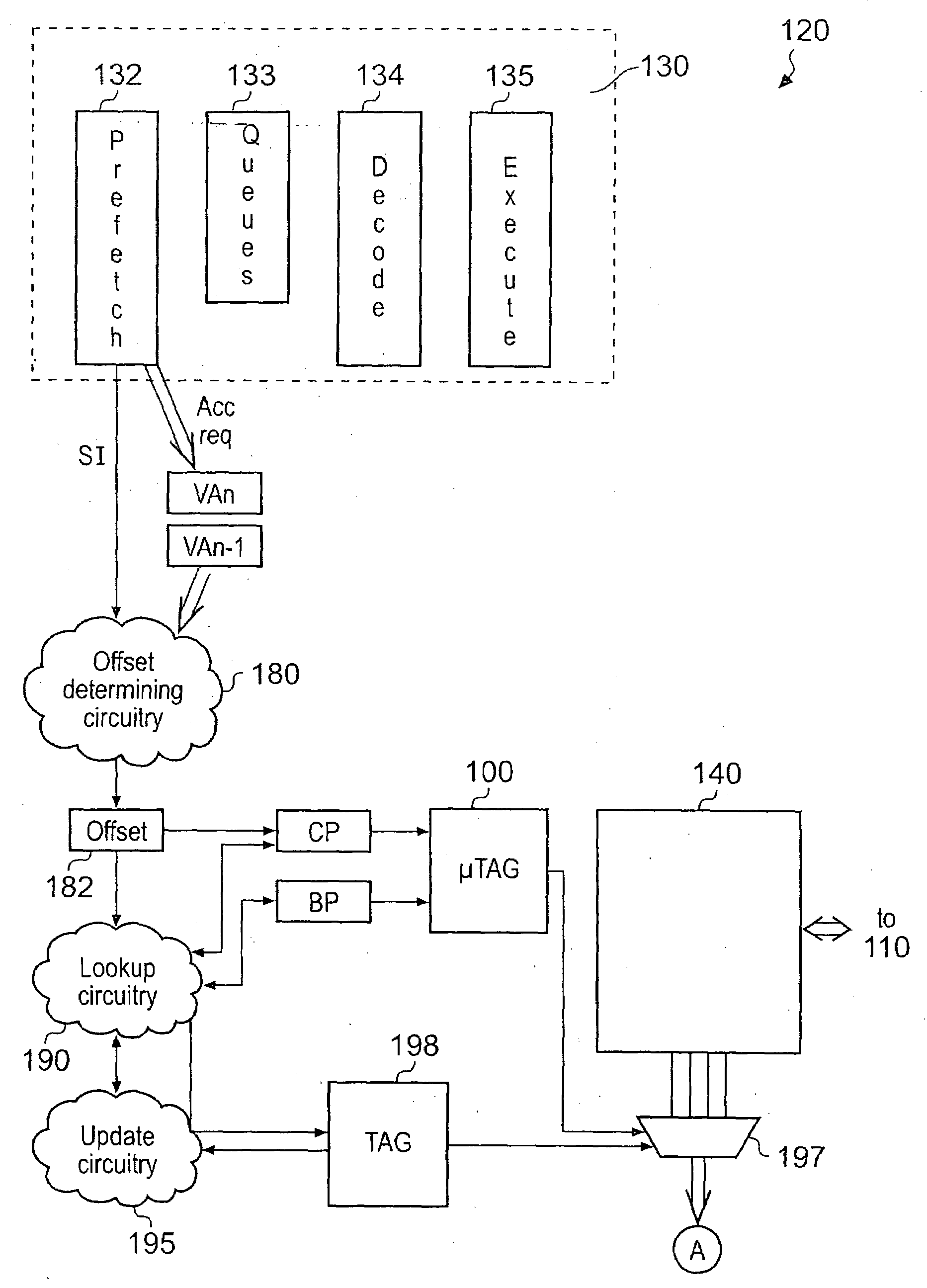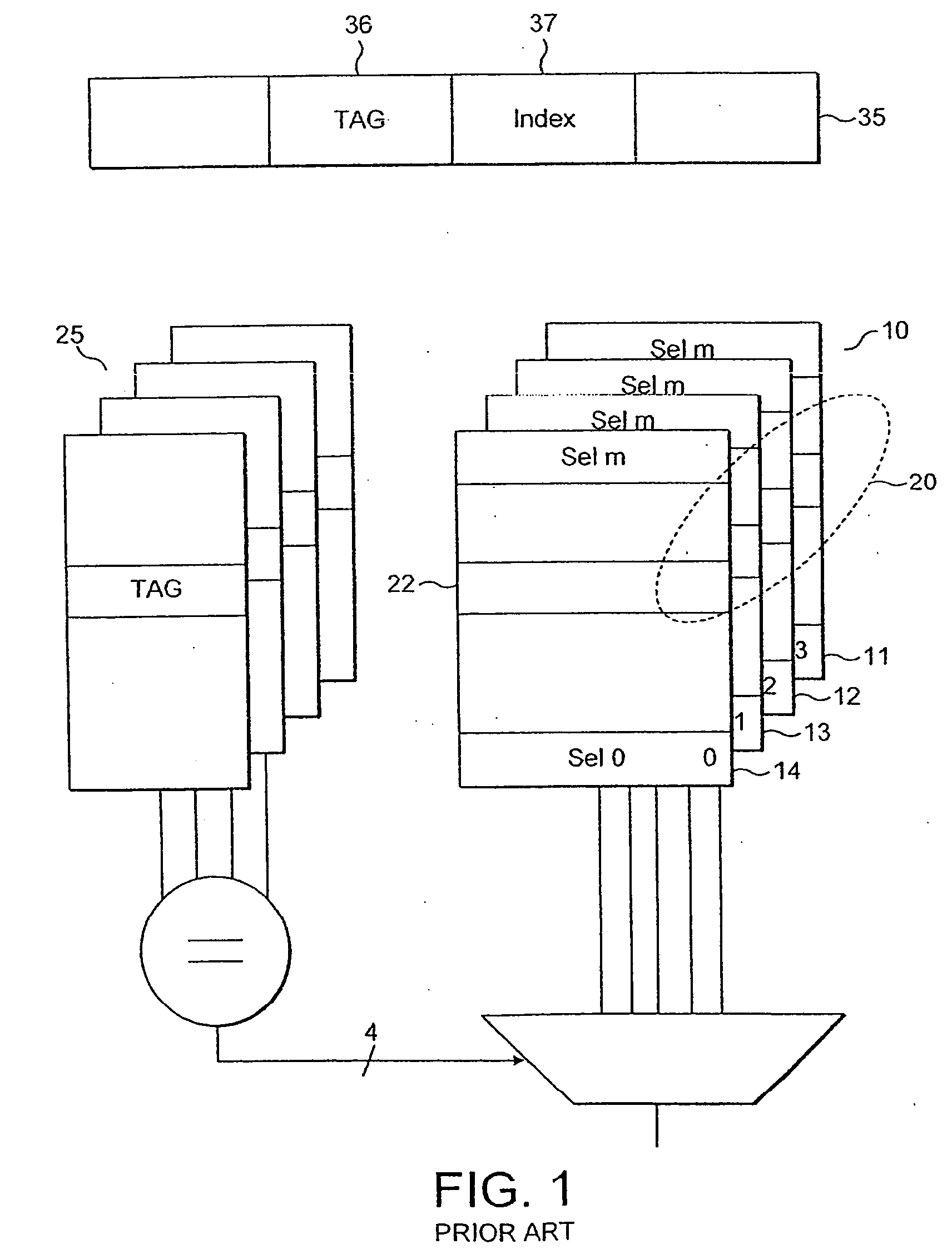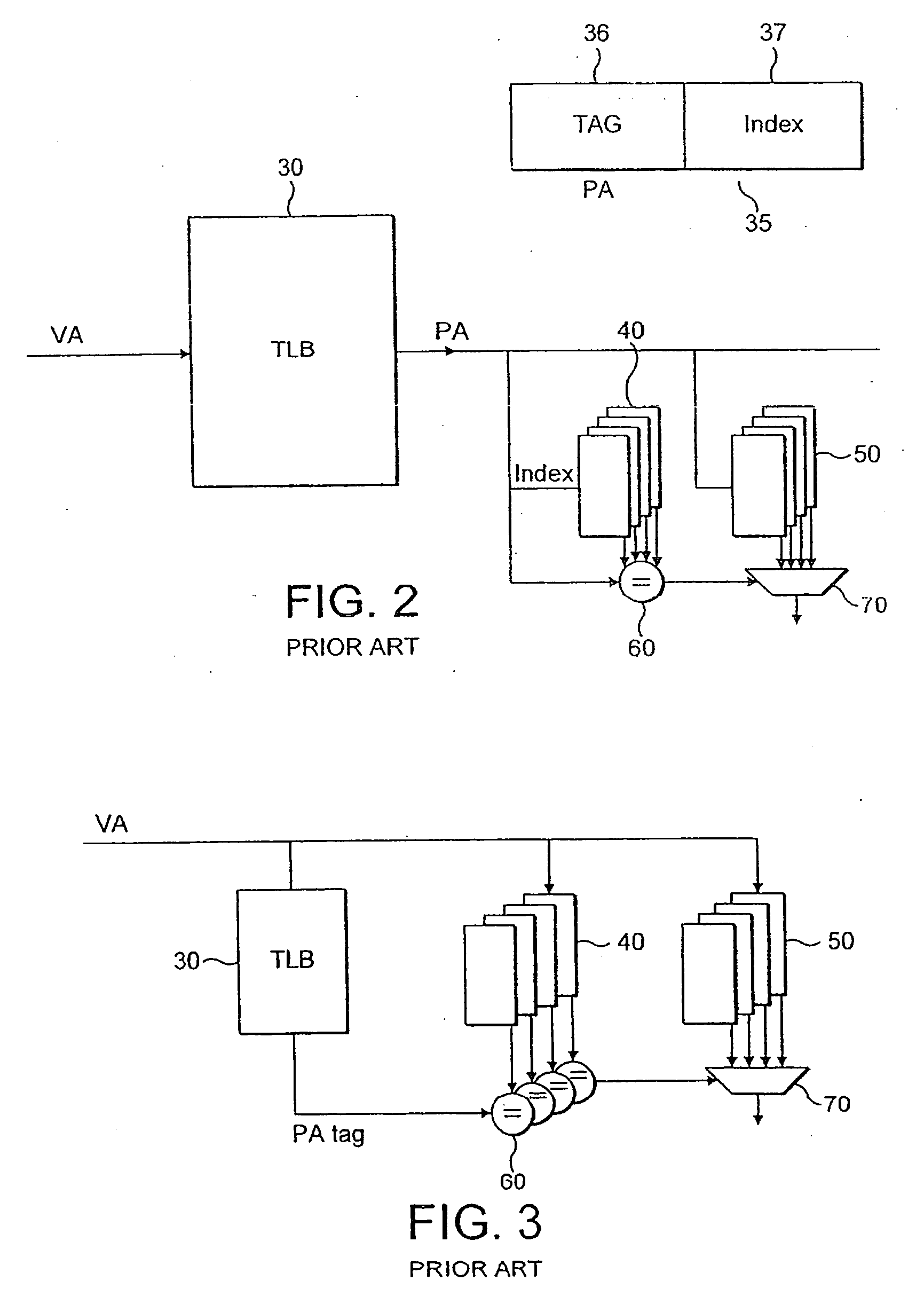Cache accessing using a micro TAG
- Summary
- Abstract
- Description
- Claims
- Application Information
AI Technical Summary
Benefits of technology
Problems solved by technology
Method used
Image
Examples
Embodiment Construction
[0045]FIG. 4 shows microtag 100 which stores values indicating cache ways for a region of memory 110. Microtag 100 has n entries for storing n values indicating the cache ways for n consecutive addresses within memory 110 and comprises two pointers associated with it that point to two entries within microtag 100. One pointer is the bottom pointer which points to the lowest address covered by microtag 100 and the other is the current pointer which points to the location corresponding to the current cache access request being processed. In the case of an instruction cache this points to the same address as the program counter.
[0046]FIG. 5 shows a data processing apparatus 120 according to an embodiment of the present invention. Data processing apparatus 120 comprises a processor 130, having a prefetch unit 132, instruction queues 133, decode section 134 and an execution section or sections 135. There is an instruction cache 140 that prefetch unit 132 fetches instructions from and a me...
PUM
 Login to View More
Login to View More Abstract
Description
Claims
Application Information
 Login to View More
Login to View More - R&D
- Intellectual Property
- Life Sciences
- Materials
- Tech Scout
- Unparalleled Data Quality
- Higher Quality Content
- 60% Fewer Hallucinations
Browse by: Latest US Patents, China's latest patents, Technical Efficacy Thesaurus, Application Domain, Technology Topic, Popular Technical Reports.
© 2025 PatSnap. All rights reserved.Legal|Privacy policy|Modern Slavery Act Transparency Statement|Sitemap|About US| Contact US: help@patsnap.com



